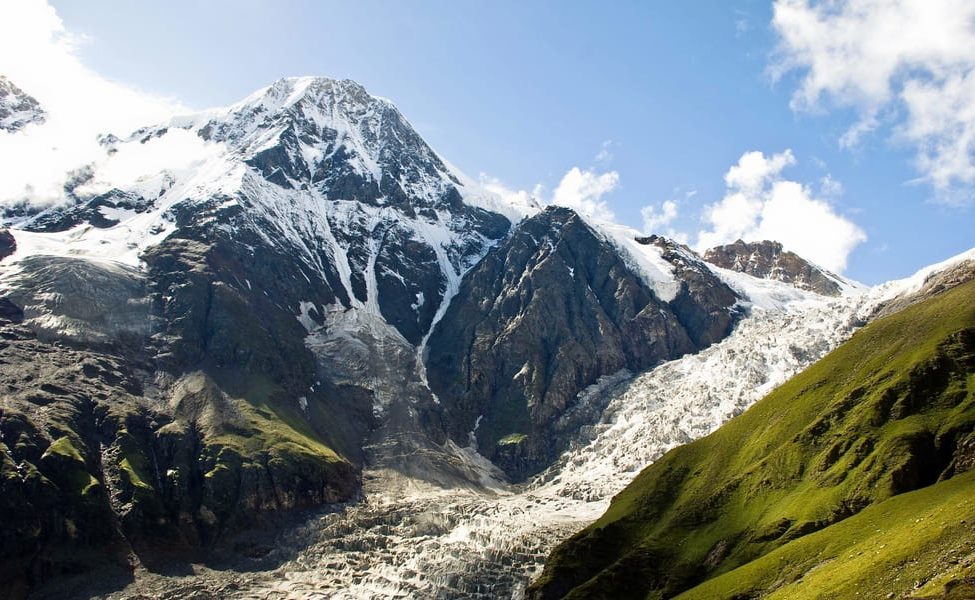Located in the Kumaon region of Uttarakhand, the Sunderdhunga trek is a relatively lesser-known trek that offers mesmerizing views of snow-capped peaks, lush green forests, and beautiful meadows. The trek is named after the Sunderdhunga Valley, which is home to several beautiful glaciers and high-altitude lakes. The trail to the valley passes through remote villages, dense forests, and several beautiful campsites, making it a perfect choice for adventure enthusiasts and nature lovers. Here is all the tourist information you need to know before planning your Sunderdhunga trek.
Best Time to Visit:
The best time to visit Sunderdhunga is from May to June and from September to November. During these months, the weather is pleasant, and the views are clear. The monsoon season from July to August should be avoided due to the risk of landslides and floods. In winter, the region receives heavy snowfall, making the trekking route inaccessible.
Trek Duration:
The Sunderdhunga trek is a moderate-level trek that takes around 7-8 days to complete. The trek covers a total distance of 60 km (approx.) and reaches a maximum altitude of 15,066 feet at the Maiktoli peak. The trekking route passes through several beautiful villages and campsites, including Dhakuri, Khati, Jatoli, Kafni Glacier, and Sunderdhunga Valley.

Trek Itinerary: Here is a day-by-day itinerary for the Sunderdhunga trek:
Day 1: Drive from Kathgodam to Loharkhet (225 km; 9-10 hours)
Day 2: Trek from Loharkhet to Dhakuri (2680 m; 11 km; 6-7 hours)
Day 3: Trek from Dhakuri to Khati (2210 m; 6 km; 3-4 hours)
Day 4: Trek from Khati to Jatoli (2590 m; 11 km; 6-7 hours)
Day 5: Trek from Jatoli to Kafni Glacier (3860 m; 12 km; 7-8 hours)
Day 6: Trek from Kafni Glacier to Sunderdhunga Valley (3650 m; 14 km; 8-9 hours)
Day 7: Trek from Sunderdhunga Valley to Khati (2210 m; 20 km; 8-9 hours)
Day 8: Trek from Khati to Dhakuri (2680 m; 17 km; 7-8 hours) Day 9: Trek from Dhakuri to Loharkhet (225 km; 11 km; 5-6 hours) and drive back to Kathgodam
Permits and Fees:
The Sunderdhunga trek falls under the jurisdiction of the Bageshwar district administration. All trekkers are required to obtain a permit from the forest department and pay a nominal fee for the same. The permit can be obtained from the forest office in Loharkhet or Khati. Additionally, trekkers are required to obtain an Inner Line Permit (ILP) for non-Indian nationals and an e-pass for inter-state travelers.
Accommodation and Food:
During the Sunderdhunga trek, trekkers can stay at various campsites or homestays along the trekking route. Basic accommodation facilities are available at Dhakuri, Khati, Jatoli, and Kafni Glacier. Trekkers can also choose to carry their tents and set up camps at suitable locations. The trekking route also has several shops and eateries where trekkers can buy food and supplies.
Safety Tips For Sunderdhunga Trek
The Sunderdhunga trek in Uttarakhand is a beautiful but challenging trek that requires proper preparation and precautions. Here are some safety tips to keep in mind while trekking:
- Physical Fitness: The trek to Sunderdhunga is strenuous and requires a good level of physical fitness. Make sure you are physically fit and have undergone some basic training before embarking on the trek.
- Weather Conditions: The weather in the mountains can be unpredictable, and it is important to be prepared for all conditions. Make sure you carry warm clothing, rain gear, and sturdy trekking shoes.
- Altitude Sickness: Altitude sickness is a common problem for trekkers in the mountains. Make sure you acclimatize properly by taking frequent breaks and staying hydrated.
- Follow the Trail: Always stick to the marked trail and avoid taking shortcuts or deviating from the path. If you are unsure of the way, ask your guide or fellow trekkers.
- Carry Enough Water and Food: Carry enough water and food with you, as there may not be many options for food and water along the way.
- Wildlife Safety: The Sunderdhunga region is home to a variety of wildlife, including bears and leopards. It is important to stay alert and follow the guidance of your guide.
- Emergency Contact: Make sure you have emergency contact information for the local authorities and your trekking agency.
Following these safety tips can help you have a safe and enjoyable trekking experience in Sunderdhunga.

0 Comment